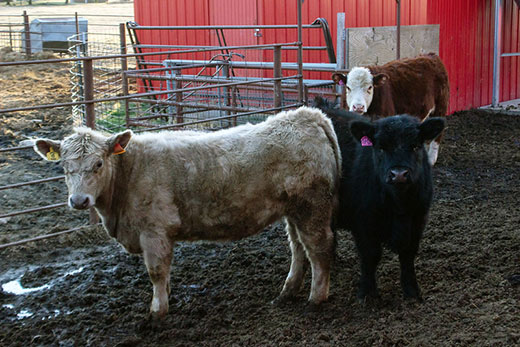Snow thawing and warm days may lift the spirits of many, but for cattle producers it often leads to extra work managing around mud.
According to Kansas State University Research and Extension, not only is mud an inconvenience, but the veterinarians at the Kansas State University Beef Cattle Institute said if not managed properly, it can negatively impact cattle performance.
Addressing this topic on a recent Cattle Chat podcast, BCI nutritionist Phillip Lancaster said that depending on the mud depth, cattle will consume less feed. He pointed to data collected in feedyards, but said this would also apply to cow-calf operations.
“If a cow is standing in 4-8 inches of mud, there can be up to a 15% decrease in her feed intake,” Lancaster said. “If cattle actually lay in mud where their haircoat is wet and matted down in cold weather, their maintenance requirements increase 20%.”
If that is the situation a producer is facing, BCI director and veterinarian Brad White suggested altering the cattle diet.
“When the maintenance demands increase, cattle should be fed a diet that is both energy and protein dense,” White said.
To keep the ground protected from the mud, some producers construct shelters for their cattle but agricultural economist Dustin Pendell said that can be costly.
“Building facilities can be expensive,” Pendell said. “The cheapest structure for shelter is a hoop barn.”
Shelters also encourage cattle to draw closer together, which veterinarian Bob Larson said presents some additional disease risk.
“To reduce the chance for sickness, don’t let the cattle congregate in one area. Move the hay feeding location frequently and keep it far away from the water source,” Larson said. “By doing that, producers will minimize the accumulation of mud.”
Lancaster also suggested using gravel to fill in high traffic areas.
“The rock will provide solid footing and keep the cattle from sinking so deep in the mud,” he said.
To hear more about this topic tune into the BCI Cattle Chat podcast online.
_ _ _
Kansas State University photo



